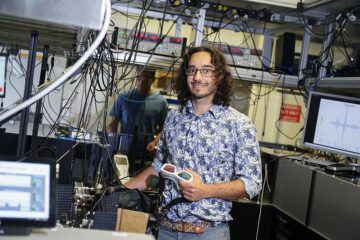Parkinson Risk Assessment Out of Blood Samples

A new method for diagnosis and prognosis of Parkinson’s disease
Invention: Parkinson’s disease (PD) is the second most prevalent neurodegenerative disease affecting about 2% of the population over 65. The most prominent neuro¬patho¬logical characteristics of PD are progressive cell death within the nigrostriatal system and the appearance of cytoplasmatic aggregates of alpha-synuclein (SNCA), so-called Lewy bodies. The disease is typically diagnosed in an advanced stage when 70% of the dopaminergic neurons are lost. Especially in the light of new disease-modifying treat-ments, there is a great need for the early detection of PD. Scientists of the University of Bonn have found that the methylation pattern of the SNCA-gene is indicative for patients having developed PD. Surprisingly, it could be shown that said methylation status can be assessed based on DNA from peripheral blood cells.
Weitere Informationen: PDF
PROvendis GmbH
Tel.: +49 (0)208/94105 10
Ansprechpartner
Dipl.-Ing. Alfred Schillert
Media Contact
Alle Nachrichten aus der Kategorie: Technologieangebote
Neueste Beiträge

Neue universelle lichtbasierte Technik zur Kontrolle der Talpolarisation
Ein internationales Forscherteam berichtet in Nature über eine neue Methode, mit der zum ersten Mal die Talpolarisation in zentrosymmetrischen Bulk-Materialien auf eine nicht materialspezifische Weise erreicht wird. Diese „universelle Technik“…

Tumorzellen hebeln das Immunsystem früh aus
Neu entdeckter Mechanismus könnte Krebs-Immuntherapien deutlich verbessern. Tumore verhindern aktiv, dass sich Immunantworten durch sogenannte zytotoxische T-Zellen bilden, die den Krebs bekämpfen könnten. Wie das genau geschieht, beschreiben jetzt erstmals…

Immunzellen in den Startlöchern: „Allzeit bereit“ ist harte Arbeit
Wenn Krankheitserreger in den Körper eindringen, muss das Immunsystem sofort reagieren und eine Infektion verhindern oder eindämmen. Doch wie halten sich unsere Abwehrzellen bereit, wenn kein Angreifer in Sicht ist?…

















